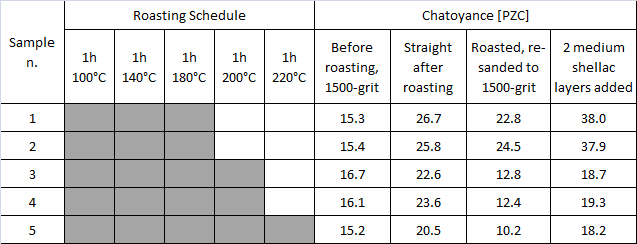This page shows PZC results before and after “roasting”, a process that visibly alters the color of Maple.
5 curly maple samples were sanded to 1500-grit and submitted to PZC measurement;
then they were roasted and measured again;
then they were heavily sanded to expose the core of the treated samples, re-sanded to 1500-grit and measured again.
Eventually, they were coated with “medium shellac” (2 layers) and measured again.
Results are shown in table below:

It is concluded that roasting increases visible Maple chatoyance only if moderate temperatures are employed (samples 1 and 2), and this happened not only on the surface, but on the whole sample volume. These samples achieved very high chatoyance after finishing.
On higher temperature schedules, the wood gets much darker and it loses much of its chatoyance after sanding.
Gifs below show some examples before and after roasting.
Sample 1:




Sample 2:




Sample 3



